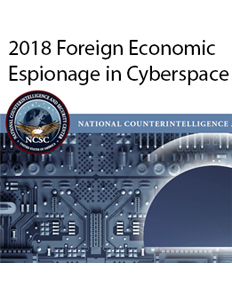
The previous decade has seen a critical expansion in the number of organizations submerged in monetary reconnaissance—either as a casualty or as the objective of a government examination. The thought processes in taking basic business data are equivalent to them at any point were and can be followed back millennia. From the mysterious cycles of China’s silk industry to the Cartwright loom of Britain’s material industry of the 1800s, and now to the chips of Silicon Valley in the new millennium, nothing has changed. It’s simply that now, the chance to act is a lot simpler. The result is high, and the danger of getting captured is low. Everywhere device security is a must. Advances in innovation, the appearance of the Internet, what’s more, political changes have changed the courses in which data is caught and introduced for use in the worldwide economy. The record—the methods but which data is regularly moved—has developed significantly, and today U.S. courts by and large hold that records incorporate not just the 8.5″ x 11″ paper rendition, yet additionally email, records on PC circle, phone message, manually written notes, sound chronicles, video, and draft renditions of paper and electronic correspondences. These “records” are made, put away, shared, and conveyed unexpectedly than customary paper archives, which means new work processes have been set up to keep the data moving dependably. The innovation furthermore, new work processes make representatives more useful, however, they additionally leave business data more defenceless against burglary and misfortune than they have been before. Another factor adding to the ascent of monetary secret activities includes worker versatility and moving loyalty. The signs of uprightness in the working environment—trust, faithfulness, and commitment—are not what they used to be. Today, workers give pretty much nothing over a passing idea to leaving with development and resourcefulness—purchased and paid for by an organization—and utilizing it as a negotiating tool to climb the work stepping stool, conceivably with a contender.
Who is included?
Any organization is powerless to proprietary innovation burglary and misfortune. Mid-to huge size associations are particularly defenseless because their limits are more extensive, they have more workers to oversee, and many work globally. These huge associations can be focused on by serious business undertakings and unfamiliar governments.
Business undertakings
Serious associations are the most self-evident wellspring of monetary undercover work. Indeed, of the around 40 cases that were indicted under the Economic Espionage Act of 1996 hitherto, almost all were corporate-on-corporate, where one organization directed another. Just two cases included unfamiliar government sponsorship. Lacking expected assets to dispatch another item R&D program, numerous enterprises choose to make everything fair by taking time-serious and expensive examination results from contenders. Sometimes, they use the data to fuse something similar or comparative cycles or items into their associations. In different cases, they survey the proprietary innovation data to perceive how their rivals work. In either case, the casualties of financial reconnaissance have lost their upper hand and experience a debilitating situation in the commercial center.
Unfamiliar governments
Organizations will in general think little of the danger factor of unfamiliar knowledge tasks because the movement is hard to identify and its effect may not be known for quite a long time if at any time.

